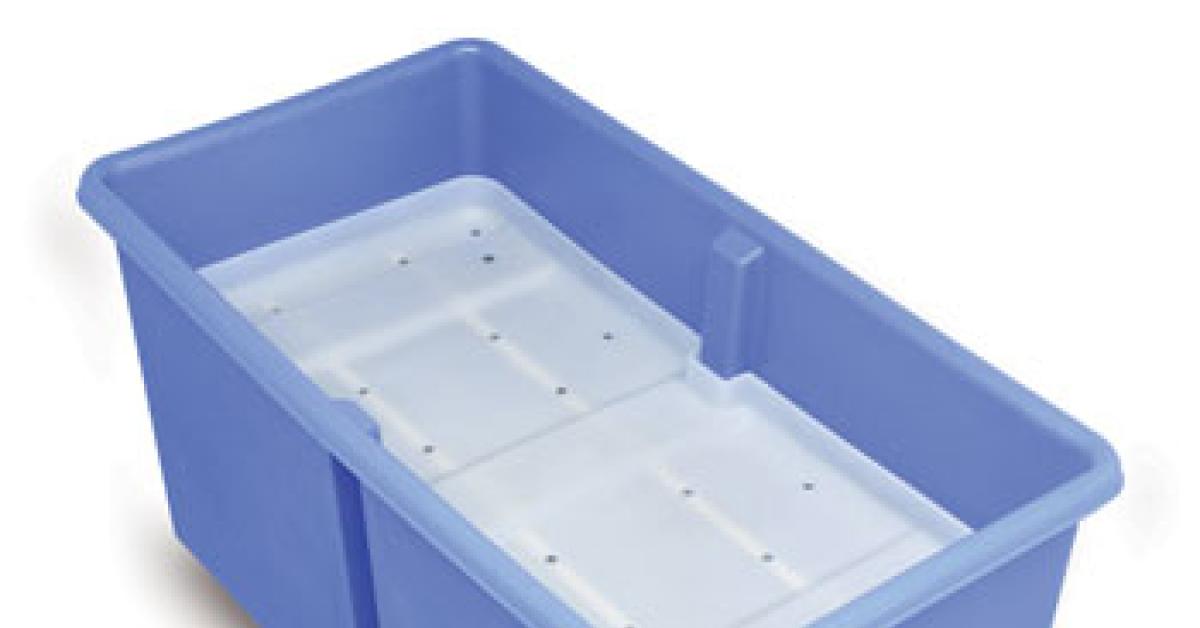ASHTABULA, Ohio — When laundry managers review their injury logs with inspectors from OSHA or from their workers’ compensation insurance carriers, back injuries frequently rank among the most commonly reported. On average, each back-injury claim represents a week of lost productivity, according to the Bureau of Labor Statistics, plus associated healthcare costs. The culprits triggering many of these back injuries are not difficult to fix.
By paying attention to ergonomics, work positioning and the elimination or minimization of repetitive bending, reaching and lifting, laundry managers may save their workers from needless pain and injury and save their companies from needless, burdensome costs.
Spring-Loaded Carts Prevent Back Strain
Spring loading refers to setting a platform of vinyl-covered wire frame, plastic or plywood atop or under a series of metal springs, all set within a laundry truck or cart.
When linens are placed on top, the platform gradually sinks into the bottom as the weight of the linens increases. As linens are removed during cart makeup or when fed into a flatwork ironer, for two examples, the platform gradually and automatically rises.
It is this rising action that directly reduces the lower back strain by maintaining the height of the work at or near the waist level of most workers. Reaching into the bottom of carts is eliminated.
Two Types of Spring Loading
From a review of utility trucks being used to hold clean linens for feeding a variety of machinery at the Clean Show, the majority of them were fitted with the hanging style of spring loading. In this style, one end of each spring is attached to the platform through grommets set within the perimeter of the platform while the other end of the spring is hooked over the rim of the laundry cart or truck, always at the corner and sometimes in the middle depending on the load.
The platform hangs within the container, and the load is borne from above. The springs are typically encased in a flexible sleeve to safeguard workers from contact with the springs and to prevent linens from getting caught or snagged.
The second style of spring loading hides the springs underneath the platform. This coiled style virtually eliminates the potential for the springs to come into contact with workers or linens. Either style may be sized to fit nearly any type of utility cart or truck commonly found in a laundry.
Which Is Better?
Both styles offer comparable performance and longevity with almost no maintenance requirements. Both styles may be removed to clean the inside of the cart without any tools. Their zinc-plated, rust-resistant springs rarely wear out from too many cycles and have been known to last for decades, as long as the weight of laundry placed on the platform is within the specified range.
The coiled style handles heavier loads than the hanging style, with load ratings of approximately 38 pounds per spring at full spring extension versus approximately 31 pounds per spring when hanging from the rim. Therefore, to handle 300 pounds of laundry, for example, the coiled style would require eight springs underneath while the hanging style would require 10 springs around the perimeter of the utility truck. The difference of only two springs may affect the price by as little as $20, but when applied over a fleet of 100 utility trucks the savings become substantial.
From a safety perspective, though both styles meet ergonomic needs, the coiled style earns points for hiding the spring mechanism under the platform. However, the hidden coil style requires space within the interior of the cart or truck. This means a 14-bushel laundry truck, for example, with the spring-loaded mechanism hidden inside, actually functions more as a 12-bushel laundry truck. To move 14-bushel loads, a larger laundry truck needs to be used at a slightly higher price. Again, when applied over a fleet of 100 utility trucks, the difference becomes substantial.
Monday: Specifying the right spring-loaded mechanism…
Have a question or comment? E-mail our editor Matt Poe at [email protected].

